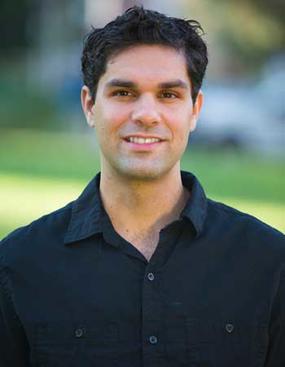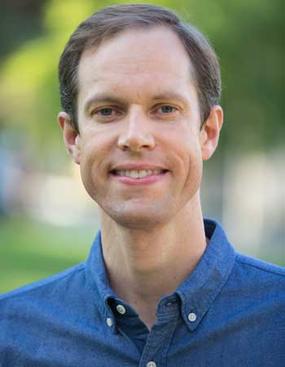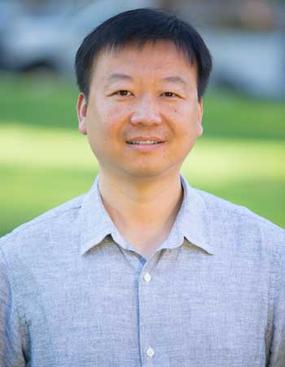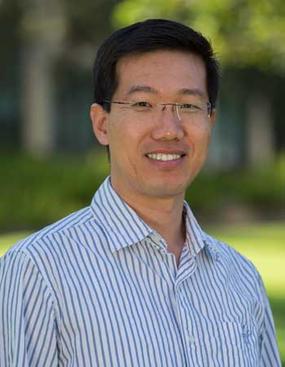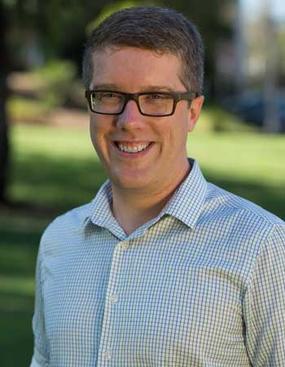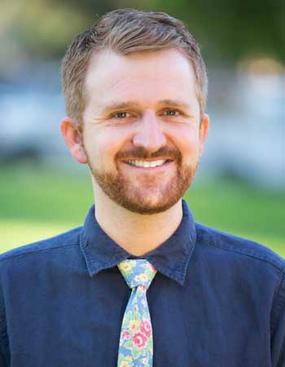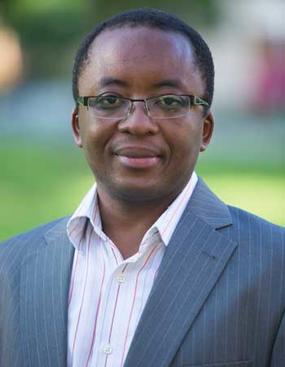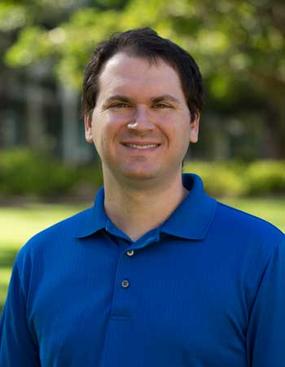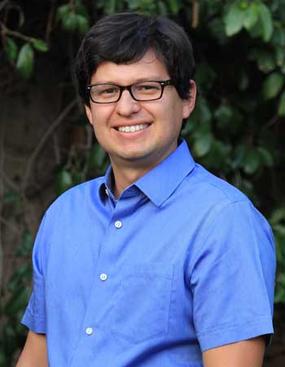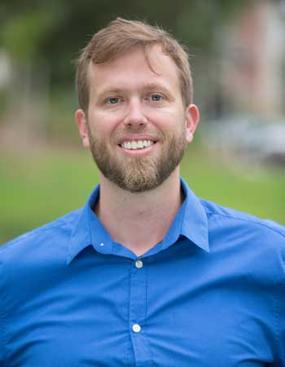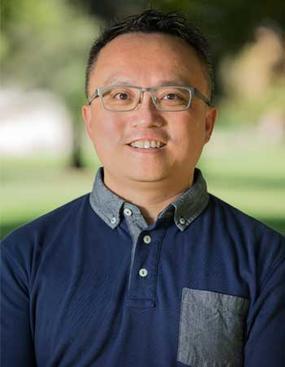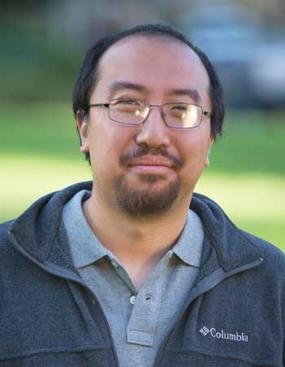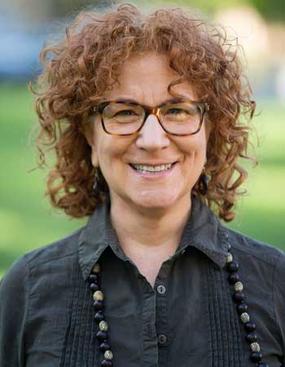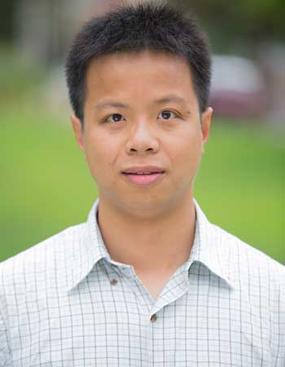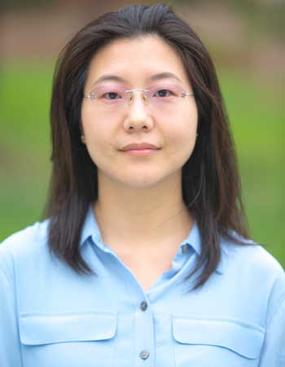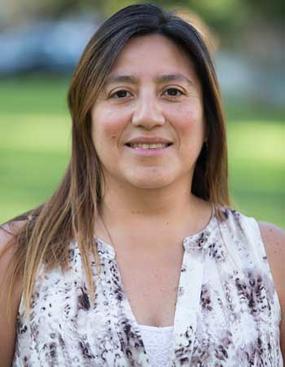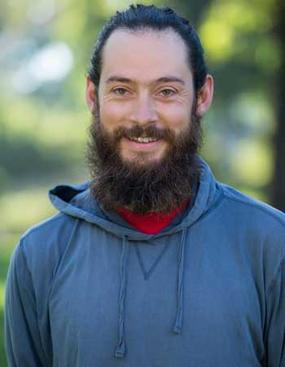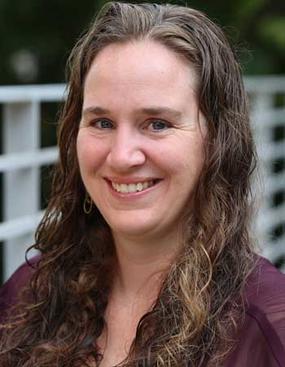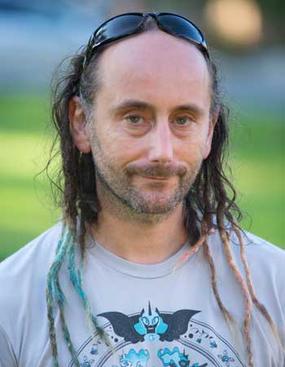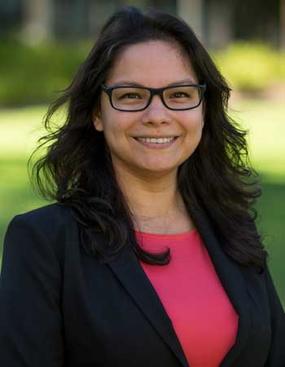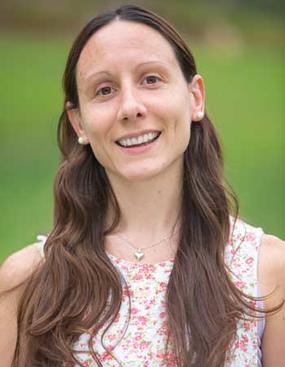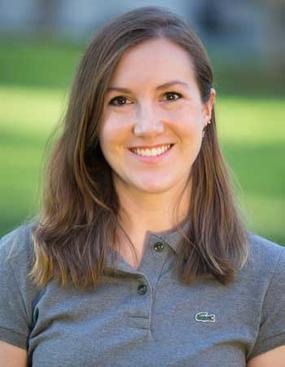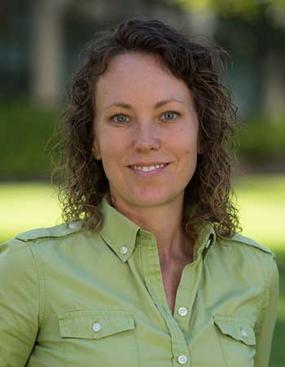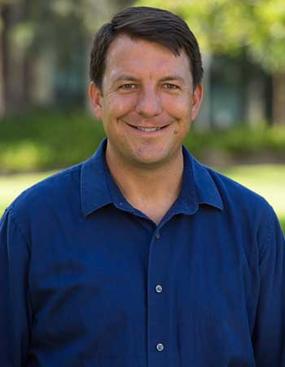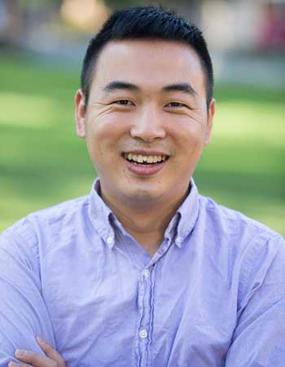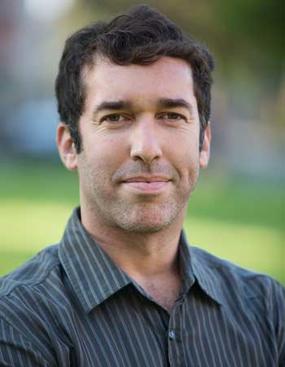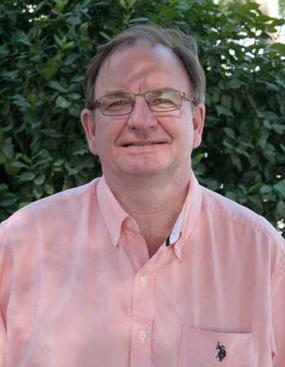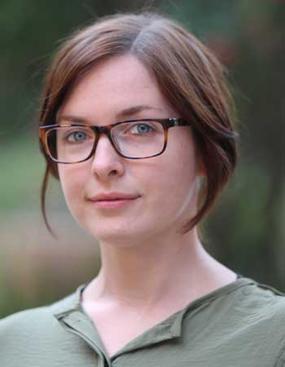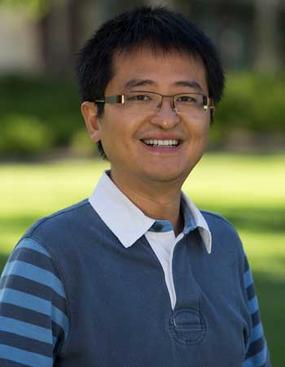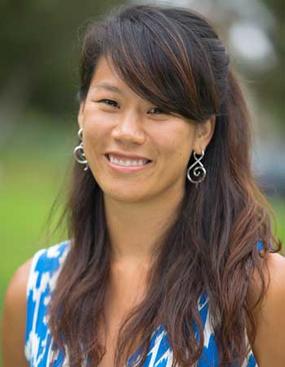
Omar S. Akbari
Assistant Professor of Entomology and Assistant Entomologist
Department of Entomology
Degree
Ph.D., Cell and Molecular Biology, University of Nevada, Reno
Research
Mosquitoes are perhaps the most dangerous animals in the world. They are the primary vectors for major human diseases such as yellow fever, malaria and dengue fever, which together infect hundreds of millions of humans worldwide, killing millions each year, with over 50% of the world’s population presently at risk (WHO). There are currently no vaccines for either dengue fever or malaria and mosquitoes are rapidly evolving resistance to commonly used pesticides and anti-malarial drugs. Therefore given the number of infections and deaths, current approaches for prevention of mosquito-borne diseases are immeasurably inefficient. What remains critical for vector control is the development of catalytic approaches requiring only small efforts that can generate long lasting solutions. With the rapid advances in insect genetic engineering, mathematical modeling of wild populations, synthetic biology, and the comprehensive understanding of dengue and plasmodium lifecycles in mosquitoes, unique opportunities have arisen to prevent infectious diseases through genetic manipulation of wild insect vector populations. My research focuses on studying the basic genetics and physiology of mosquitoes with the overall goal of developing innovative, novel, creative, synthetic biology inspired genetic control technologies for reducing the burden of mosquito vector borne diseases on humans. The underlying hypothesis inspiring this work is that the introduction and spread of genes that prevent mosquitoes to transmit pathogens should in theory lead to reduced transmission of these pathogens resulting in reductions of human infections and/or death. To test this hypothesis, first we need a broad understanding of the biology of the mosquito that can be used to develop gene-based strategies for engineering mosquitoes that are resistant to pathogens; second we need to engineer mosquitoes that are resistant to all types of infections; third we need to develop tools to rapidly “drive” these laboratory developed genes into wild mosquito populations. Together, these aims can conceivably provide a foundation that has the potential to revolutionize vector control of mosquitoes.
George D. Becker
Assistant Professor
Department of Physics & Astronomy
Degree
Ph.D., California Institute of Technology, Astrophysics
Research
The majority of matter in the Universe resides in a vast filamentary network that stretches between galaxies and permeates deep space. Known as the intergalactic medium (IGM), this network provides the raw materials for galaxy formation, and in turn, galaxies impact the properties of the IGM in ways that change over cosmic time. Understanding the connection between galaxies and the IGM is therefore essential for determining how structures in the present-day Universe took shape. Dr. Becker’s research focuses on studying the IGM using the absorption patterns that gas in deep space imprints onto the spectra of background quasars. He uses optical and infrared data obtained from some of the world’s largest telescopes to measure properties of the gas such as its temperature, chemistry, and ionization state. Dr. Becker is particularly interested in the evolution of the IGM early in the history of the Universe, when the first galaxies were formed. He also uses the characteristics of the IGM to put constraints on the nature of dark matter.
Meng Chen
Assistant Professor of Cell Biology
Department of Botany & Plant Sciences
Degree
Ph.D., Iowa State University
Research
Plant development and growth are extremely plastic in response to changes in their light environment. Although a suite of photoreceptors has been identified, how photoreceptor signaling reprograms the genome during the developmental transitions in plants is still not fully understood. A molecular understanding of plant photoreceptor signaling not only will have important implications for crop improvement but also will greatly enhance our knowledge of the evolutionarily conserved basic principals of transcriptional reprogramming in eukaryotes, including human. Dr. Chen’s research focuses on understanding how photoreceptor signaling controls gene expression by regulating the nuclear architecture and genome organization. In particular, Dr. Chen is interested in (1) understanding the function and biogenesis of the photobody – a photoreceptor-containing and light-sensory subnuclear domain – in transcriptional regulation; and (2) elucidating the mechanism and significance of light-regulated gene repositioning in transcriptional regulation.
Jun-Hyeong Cho
Assistant Professor of Cell Biology and Neuroscience
Department of Cell Biology and Neuroscience
Degree
M.D., Catholic University of Korea
Ph.D., Ohio State University
Research
Dr. Cho’s research goal is to address one of the most fundamental questions in neuroscience: how does the brain work for learning and memory? To this end, he uses the rodent model of fear conditioning to investigate neural circuit mechanisms of fear learning and extinction. The main hypothesis of his research is that neuroplasticity underlies learning and memory. With electrophysiological approaches, he tests this hypothesis by examining how fear and extinction learning impact synaptic responses and neuronal excitability in neural circuits implicated in fear and anxiety. To determine the causal relationship between these changes and behavior, he employs in vivo optogenetics and examines how bidirectional control of a neural pathway affects the formation and extinction of fear memory. Results from these studies would contribute to a deeper mechanistic understanding of fear learning and memory, and may provide hints to improve treatment of anxiety disorders, the most common psychiatric disorders.
Matthew P. Conley
Assistant Professor of Chemistry
Department of Chemistry
Degree
Ph.D., University of Chicago, Chemistry
PostDoc
Swiss Federal Institute of Technology (ETH) – Zürich
Institut Català d'Investigació Química (ICIQ)
Research
The goal of our research is to develop a molecular understanding of the active sites of heterogeneous catalysts. In order to study these catalysts at this level of detail we apply an interdisciplinary strategy that combines material synthesis, surface science, and synthetic inorganic chemistry. Our approach involves the preparation of high surface area materials containing characteristic surface sites that react with inorganic complexes to form metal sites with well-defined coordination spheres. This allows us to optimize the activity of heterogeneous catalysts based on the molecular structure of the active site, which we determine by spectroscopic techniques, and to study the key mechanistic steps in the catalytic cycle. We design the active sites in these catalysts to tackle challenging catalytic problems, such as the activation of C-H bonds to promote reactions relevant to commodity chemical production and the activation of small molecules for alternative energy applications.
Adler R. Dillman
Assistant Professor of Parasitology and Assistant Parasitologist
Department of Nematology
Degree
Ph.D. in genetics, California Institute of Technology
B.Sc. in microbiology, Brigham Young University
PostDoc
Research in Microbiology and Immunology, Stanford University
Research
We study host-parasite interactions from both perspectives, using parasitic nematodes and insect host models. Our interest is in how hosts recognize and initiate an immune response to parasites and the nature and specificity of the immune response. In studying immunity we differentiate the relative roles of resistance, the ability of the host to reduce or eliminate pathogen burden, and disease tolerance or the ability of the host to manage the effects of infections. From the perspective of the parasite we study how parasites evade and/or suppress immunity and host-seeking behavior and olfaction using parasitic nematodes. To investigate how parasites interact with host immunity we are studying parasite proteins that are involved in this process and are working to identify their targets and characterize those interactions.
Boniface P. T. Fokwa
Assistant Professor of Chemistry
Department of Chemistry
Degree
Ph.D. (Dr.rer.nat.) in Chemistry from the Dresden University of Technology (Dresden, Germany)
Fokwa received his Ph.D. (Dr.rer.nat.) in Chemistry from the Dresden University of Technology (Dresden, Germany), and was a postdoctoral fellow and Habilitant at the RWTH Aachen University (Aachen, Germany). He has been visiting Professor at UCLA before moving to UCR.
Research
Fokwa’s research focuses on designing new solid state materials by combining experiments and computational methods, with a particular emphasis on finding appropriate materials for energy-related applications (magnetic, magnetocaloric, superconducting and spintronic materials) as well as refractory materials (hard and superhard materials).
Joseph Genereux
Assistant Professor of Chemistry
Department of Chemistry
Degree
Ph.D., California Institute of Technology
Atherosclerosis is widely prevalent in humans and can lead to ischaemic heart disease and stroke, the leading worldwide causes of death. Low density lipoproteins (LDL) are central to the molecular etiology of atherosclerosis, and their clinical biochemistry is intimately tied to atherosclerotic risk. Our group is exploring how the biological pathways that regulate lipoprotein folding and assembly impact the biochemical properties of lipoprotein particles. We are particularly interested in developing in situ and high-throughput tools to:
- characterize lipoprotein heterogeneity
- quantify protein homeostasis across the proteome
- measure the contribution of physiological stress to LDL atherogenicity
Juan Pablo Giraldo
Assistant Professor of Plant Physiology & Assistant Plant Physiologist
Department of Botany & Plant Sciences
Degree
Ph.D., Harvard University, Organismic and Evolutionary Biology
Dr. Giraldo’s lab works at the interface between plant physiology and nanotechnology. Nanoparticles have unique optical, electronic, and chemical properties, but their impact on plant function and structure is essentially unexplored. We aim to develop research tools with nanomaterials to study, manipulate, and monitor plant physiological mechanisms. Our nanobionic approach also seeks to enable plants with novel or augmented functions through the assembly of nanomaterials in organelles, tissues and whole organisms. Dr. Giraldo’s research is currently focusing on 1) exploring the mechanisms of nanoparticle enhancement of plant photosynthesis, 2) enabling novel targeted and controlled biomolecule delivery nanocarriers for studying and engineering plant defense response, and 3) developing nanoparticle-based sensors for monitoring temporal and spatial changes in concentration of plant signaling molecules in real-time.
- characterize lipoprotein heterogeneity
- quantify protein homeostasis across the proteome
- measure the contribution of physiological stress to LDL atherogenicity
Andrew Gray
Assistant Professor of Watershed Hydrology and Assistant Watershed Hydrologist
Department of Environmental Sciences
Degree
Ph.D., University of California Davis, Hydrologic Sciences
Research
A primary watershed function is streamflow: the conveyance of water, along with dissolved and solid particles, through river systems. Streamflow is controlled by the interaction of external drivers, such as climate, and internal factors, such topography, geology, soils, vegetation, and human activities. In turn, the erosive and depositional effects of water on sediments transform the shape of the river system and the entire watershed. The expression of these processes is evident in the quantity and quality of water in the river system over time – which is essential to human beneficial uses and ecosystem services within the watershed, and beyond. Dr. Gray’s research focuses on i) applying forensic methods to determine the dominant controls on changes in watershed functions over time, ii) integrating watershed scale and local factors to understand how and why river system forms and structures change, and iii) assessing the water quality implications of these processes; all with the help of remote sensing, environmental monitoring and sedimentological tools.
Rong Hai
Assistant Professor of Virology
Department of Plant Pathology & Microbiology
Degree
Ph.D., University of California Berkeley, Comparative Biochemistry
Research
Our laboratory has broadly interests on the molecular characterization of emerging negative strand RNA viruses with focuses on discovering novel viral virulence signatures and molecular viral-host interactions. Currently, we use influenza viruses as the primary model system.
Influenza virus, family Orthomyxoviridae, is a negative-strand RNA virus with 8 segments and is grouped by its antigenic properties as type A, B or C. Influenza virus is a major human respiratory pathogen. However, only types A and B, are responsible for seasonal epidemics resulting in approximately 35,000 (US) and 500,000 (worldwide) deaths annually, while type C causes mild respiratory illness. In addition, influenza A virus can cause pandemics, which occurs every 10-50 years. Due to the lack of pre-existing immunity in humans, pandemic cases usually increase mortality and severity of the infection. For example, during 1918-1919 influenza pandemic, about one third of the world's population (or ≈500 million persons) were infected and had clinically apparent illnesses.
We combine molecular, biochemical, and imaging techniques to understand how viruses replicate and to explore virus-host interactions. We also have interests, driven by our research goals, in developing methods for manipulating genomes of other emerging viruses.
Ansel Hsiao
Assistant Professor of Microbiology and Assistant Microbiologist
Department of Plant Pathology and Microbiology
Degree
Ph.D., University of Pennsylvania, Cell and Molecular Biology
Research
Our laboratory has broadly interests on the molecular characterization of emerging negative strand RNA viruses with focuses on discovering novel viral virulence signatures and molecular viral-host interactions. Currently, we use influenza viruses as the primary model system.
Humans share their bodies with many trillions of commensal microbes, collectively known as the microbiota. The gut is site of the densest microbial colonization, and the bacteria resident there have been demonstrated to play a role in a variety of physiological processes ranging from immune development to resistance to pathogens. Recently, Dr. Hsiao has identified that interspecies bacterial communication, a process known as quorum sensing, is employed by the gut microbiota to inhibit virulence gene production by the important human diarrheal pathogen Vibrio cholerae. Dr. Hsiao’s future research focuses on 1) the role played by quorum sensing in modulating the structure and function of the gut microbiota and virulence gene regulation in V. cholerae; 2) mechanisms underlying gut microbiota-mediated colonization resistance against pathogens of the gut; and 3) methods for manipulating the structure of the gut microbiota with a view to providing prophylaxis against bacterial pathogen invasion of the gut.
Amy Litt
Assistant Professor of Plant Evolution and Development and Assistant Plant Evolutionary Developmental Biologist
Department of Botany & Plant Sciences
Degree
Ph.D., City University of New York and The New York Botanical Garden joint program in Plant Biology
Research
Evolution has produced a dazzling diversity of plant forms all of which result in different ecological interactions, economic uses, and physiological functions among plant species. Dr. Litt’s research focuses on the molecular changes that have occurred during the course of flowering plant evolution, and how those changes have produced the variety of flowers and fruits we see around us. A current focus of her work is the identification of the genetic changes in the nightshade family that allow some species, such as tomato, eggplant, or chili pepper, to produce a fleshy edible fruit, whereas other species, such as tobacco or petunia, produce their seeds in a dry woody pod. Other projects similarly address how changes in genes and genomes have produced new plant forms and new plant species.
Joshua Lui
Assistant Professor of Physics
Department of Physics & Astronomy
Degree
Ph.D. in Physics, 2011, Columbia University
Research
Our group explores novel quantum phenomena associated with light-matter interactions in low-dimensional condensed matter systems. When electrons and photons are confined in nanometer or atomic scales, they exhibit distinct properties from those in the bulk, such as strong quantum confinement and enhanced many-body interactions. We aim to elucidate the nature and dynamics of these states by advanced laser spectroscopy. Our optical techniques include Raman, absorption, luminescence, photocurrent and ultrafast pump-probe spectroscopy, with spectral range from terahertz, infrared, visible to ultraviolet, and time resolution down to femtoseconds. Currently, we are investigating the electron, phonon and (pseudo)spin dynamics in two-dimensional (2D) materials, such as graphene, boron nitride, transition-metal dichalcogenides and black phosphorus. These materials exhibit rich physics, such as strong interactions with light, emergent Dirac fermion phenomena, and strongly-correlated states. Their flat and inert surfaces also enable us to produce heterogeneous stacks of different 2D crystals with atomically sharp interfaces. These features permit engineering of devices with unprecedented properties. Given the plethora of 2D materials and potential heterostructures, we expect to identify many new physical phenomena and material properties.
Wenxiu Ma
Assistant Professor of Statistics and Assistant Statistician
Department of Statistics
Degree
Ph.D., Stanford University, Computer Science
B.S., Peking University, Computer Science
Research
Dr. Ma’s primary research interest is in developing computational algorithms and statistical methods to solve problems that stem from large-scale biological data generated by high-throughput sequencing technologies. In the past decade, breakthroughs in high-throughput sequencing technologies and their widespread applications have greatly enhanced our ability to investigate the complex world of molecular cell biology. The emergence of this type of sequencing has also brought new opportunities and challenges to the field of computational and statistical genomics. Dr. Ma develops statistical and computational methods for various types of high-throughput genomic and epigenomic datasets and has a particular interest in understanding genome regulation, including but not limited to chromatin organization, transcriptional regulation and gene expression.
Paricia Manosalva
Assistant Professor of Plant Pathology and Assistant Plant Pathologist
Department of Plant Pathology and Microbiology
Director of UCR Avocado Rootstock Breeding Program
Degree
Ph.D., Kansas State University, Plant Pathology
Research
My research is focused on studying plant-microbe interactions in order to elucidate the molecular and genetic basis of plant immunity against pathogen and pests with emphasis on oomycete pathogens from the Phytophthora genus. Oomycetes include most of the notorious plant pathogens causing devastating diseases. In my lab our research focused on two of them: i) Phytophthora infestans (Pi), the causal agent of late blight in potato and tomato, which caused the Irish Famine in 1840s and ii) P. cinnamomi (Pc), the pathogen that causes Phytophthora Root Rot (PRR), the most destructive disease of avocado worldwide. We study plant-Phytophthora spp. interactions in model plants and crops at biochemical, molecular, cellular, and genetic levels as a key aspect to identify suitable host and/or pathogen targets for manipulation to enhance plant resistance as well as develop new methods for crop protection against these diseases. In addition, we are interested on identifying and characterizing genes from P. cinnamomi involve in pathogenesis and virulence. We want to elucidate the molecular basis of the broad host specialization of P. cinnamomi (~ 3000 plant host species) in comparison with other Phytophthora spp. with narrowed host range using comparative and functional genomic approaches.
California produces about 90% of the nation’s avocado crop. California avocado growers are continuously challenged by old threats such as P. cinnamomi causing losses of $40 million annually and by new emerging challenges such as abiotic stresses (ie. salinity and drought) that reduce grower profitability and sustainability. For the past 20 years, the UCR Avocado Rootstock Breeding Program has being supported by the California Avocado Commission (CAC) to develop and release rootstocks of avocado that are resistant not only to disease but also to salinity and drought in order to address the growers and industry’s pressing needs. As the director of the UCR Avocado Rootstock Breeding Program, one of the main goals for my multidisciplinary research is to apply and incorporate the basic knowledge and information we will gain in my lab, regarding P. cinnamomi-plant interactions, pathogenesis, pathogen population studies, and plant resistance to this oomycete, into different aspects of the breeding program. In addition, because of the recent advances in avocado genetics and genomics, we will combine genomic-assisted breeding approaches to traditional breeding in order to have a more accurate genomic selection.
Carl Mautner
Assistant Professor of Mathematics
Department of Mathematics
Degree
Ph.D., University of Texas at Austin, Mathematics
Research
Pure mathematics is the study of fundamental structures in the numbers, equations and models that we use in science to help describe and study the world around us. Mautner's research is in representation theory, a branch of pure mathematics concerned with symmetry. Using ideas from algebraic geometry, he constructs and studies concrete models of abstract symmetry groups. This work has connections to other areas of mathematics and theoretical physics, including number theory, topology and quantum field theory.
Jessica Purcell
Assistant Professor of Entomology and Assistant Entomologist
Department of Entomology
Degree
Ph.D., University of British Columbia, Zoology
Research
Social behaviors have evolved in a wide range of taxa, from bacteria to slime molds and from insects to mammals. This repeated and parallel evolutionary transition raises key questions about how sociality evolves. Natural variation in social traits within or among species provides an ideal opportunity to understand factors that contribute to the emergence of different social systems. In her research, Dr. Purcell seeks the proximate and ultimate drivers of social organization. She has pursued these interests by integrating population genomics, field ecology, manipulative experiments in the lab and in the field, and individual-based modeling approaches. Dr. Purcell’s primary study organisms have been social spiders from the genus Anelosimus and socially polymorphic ants from the genus Formica.
Andy Ridgwell
Professor of Earth System Science
Department of Earth Sciences
Degree
Ph.D., University of Earth Anglia, UK, 2001
Postdoc
University of Earth Anglia, UK
University of California, Riverside
Research
Dr. Ridgwell writes computer models – numerical representations of the primary interactions of climate with atmospheric CO2, including the cycling of carbon, oxygen, and nutrients between land, ocean, and marine sediments. He applies these models to diverse questions, ranging from geological episodes of extreme glaciation and warming, and global-scale ocean anoxia, through understanding global biogeochemical cycling in the modern Earth system, to quantifying future marine impacts of fossil fuel CO2 emissions and the effectiveness (or otherwise) of geoengineering. His current interests revolve around simulating the co-evolution of marine plankton and their environment, and their ecological sensitivities to past climate perturbations and global environmental catastrophe. He never sets foot in the lab.
Sherma Rizzo
Assistant Professor of Statistics
Department of Statistics
Degree
Ph.D. University of California, Los Angeles
Research
Meta-analysis in the health sciences combines evidence from multiple studies to derive stronger results about the efficacy of treatments. In the process of data extraction from published papers, it is extremely common for the required data to be ambiguous, incomplete or missing. Existing approaches consist of computing best-estimates for the missing values without accounting for the uncertainty of the computation. As a consequence, meta-analyses’ results could be over-certain and potentially inaccurate. Dr. Rizzo’s research focuses on developing statistical models to improve the accuracy of meta-analysis by accounting for the uncertainty introduced during data extraction.
Laura Sales
Assistant Professor
Department of Physics & Astronomy
Degree
PhD: Universidad Nacional de Cordoba (Argentina), 2007
M.Sc: Universidad Nacional de Cordoba (Argentina), 2004
Postdoc
2013-2015: ITC Fellow, Harvard University, US
2010-2013: Max Planck Institute for Astrophysics, Germany
2007-2010: Kapteyn Institute, The Netherlands
Research
My research focuses on understanding the assembly of galaxies within the cosmological framework. I am particularly interested in the context and broad range of physical processes that drive the formation of galaxies; such as cosmology, gravitational dynamics and hydrodynamics, gas cooling, heating and shocks, star formation, metal enrichment and radiative processes. I take a numerical/theoretical approach at this by working daily with high resolution N-body and hydrodynamical simulations that explore the formation of galaxies.
Sandra Kirtland Turner
Assistant Professor of Paleoclimate/Paleoceanography
Department of Earth Sciences
Degree
Ph.D., Scripps Institution of Oceanography, UC-San Diego
Research
The early Cenozoic Era (~65 to 34 million years ago) was a time of extreme global warmth preceding the establishment of permanent ice sheets on Antarctica, when the deep ocean (near freezing today), reached temperatures in excess of 12°C. Reconstructing and understanding differences in carbon cycle and climate dynamics during these ‘greenhouse’ climates is crucial for understanding the likely consequences of future anthropogenic fossil fuel carbon dioxide release. Dr. Kirtland Turner’s research focuses on applying a coupled data-model approach to quantitatively reconstruct carbon cycle and climate processes on a warm Earth, particularly in response to episodes of rapid climate change. Dr. Kirtland Turner specializes in the generation of high-resolution geochemical records from deep-sea sediment cores and interprets these records through development and application of Earth system models that can simulate physical and biogeochemical processes in the atmosphere, oceans, and deep-sea sediments over a variety of timescales.
Jaimie M. Van Norman
Assistant Professor of Plant Cell and Developmental Biology & Assistant Plant Cell and Developmental Biologist
Department of Botany & Plant Sciences
Degree
Ph.D., University of Utah, Biology
Postdoc
Duke University
Research
Dr. Van Norman’s research is focused on understanding the role of cell polarity in developmental patterning. Across biological systems, cell polarity establishes specific plasma membrane domains that are essential for cell fate and function. During development, coordinated cell division and cell fate specification are necessary for stem cell renewal and tissue patterning and often rely on extrinsic, non-cell-autonomous signals. Yet, in plants, our understanding of these signaling pathways remains limited. Using the Arabidopsis root as a model organ for study, our lab has identified a group of proteins involved in intercellular signaling that show polar localization to lateral (inner/outer) plasma membrane domains. In addition, the direction of polarity of individual proteins appears to be cell type-specific. Using state-of-the-art microscopy techniques combined with a variety of genetic and molecular approaches, our research investigates how this polar localization is established and maintained and how cellular polarity contributes to organ development.
David C. Volz
Assistant Professor of Environmental Toxicology and Assistant Environmental Toxicologist
Department of Environmental Sciences
Degree
Ph.D., Duke University, Environment (Certificate in Toxicology)
Postdoc
Duke University
Research
Due to resource constraints and animal use concerns associated with conventional toxicity tests, baseline toxicity and chemical mode-of-action data are lacking for the majority of chemicals currently in commerce within the United States and around the world. To help address these uncertainties, Dr. Volz’ research focuses on the use of zebrafish as an alternative non-mammalian model for (1) rapid chemical screening and prioritization for toxicity testing; (2) discovering biologically active yet understudied chemicals; and (3) investigating mechanisms of developmental toxicity across diverse chemical classes. In addition, Dr. Volz is actively involved in global, cross-sector efforts to promote development of tiered testing strategies as well as influence research agendas and policies related to regulatory toxicity testing and chemical regulation.
Chao Wang
Assistant Professor of Chemistry
Department of Chemistry
Degree
Ph.D., Tsinghua University, Chemistry
Research
The ability to transduce electrical signals while being soft and responsive to mechanical stimulus is highly desirable for applications in energy, electronics and health care. Over the past decades, much advance has been made in the field of electronic soft materials in terms of electronic/optoelectronic performance, whereas the fundamental understanding of their solid-state mechanical properties from molecular level remains underexplored. The answers to this question will have profound implications across a wide range of disciplines, because of the key role of molecular-level designs, such as energy dissipation, assembly architecture and adhesive forces, in determining the macroscopic properties (charge transport, adaptive mechanics, etc) of polymer materials.
My research program focus in combining molecular chemistry and supramolecular chemistry to achieve precise control of electronic/mechanical properties of organic polymer materials at the molecular level. This provides a platform to develop mechanically adaptive electronic materials for diversified applications in energy storage, wearable electronics and health. Specifically, my research topics include:
- Next generation polymer electrolyte for safe, long-life-time and high-capacity lithium ion batteries
- Mechanically stretchable electronic polymers for wearable electronics and energy storage
- Adhesive electronic polymers for neural Interfaces and neuroprosthetics
- Functional self-healing polymers
David Weisbart
Lecturer with PSOE
Department of Mathematics
Degree
Ph.D., Mathematics, UCLA
Research
David Weisbart's formal training is in analysis and functional analysis as applied to quantum theory, but he has a background in probability and dierential geometry as well. He has studied the foundations of quantum theory, functional integration, measure theory and generalized functions, and non-Archimedean physical models. His research has primarily focused on nite dimensional approximations to quantum systems, quantum theories over local elds, path measures and path integrals in mathematical physics, and quantization. He is also interested in the history of mathematics and mathematical pedagogy and has written on the analytical foundations of Euclidean geometry and the works of Archimedes.
Andreas Westphal
Assistant Specialist in Cooperative Extension and Assistant Nematologist
Department of Nematology
Degree
Ph.D., University of California Riverside, Plant Pathology/Nematology
Research
Plant-parasitic nematodes damage most of our crop plants. These soil-dwelling parasites are especially damaging and persistent in perennial crops. Here, plants are in place for a long time, and the nematodes can establish at great soil depths while continuously damaging the host plants. They are difficult to manage because they are hard to reach. Suppression is challenging because some tactics used in annual crops, e.g., annual crop rotations are not possible. The perennial research program at the Kearney Agricultural Research and Extension Center is built around three focus areas: (1) development of nematode resistant and tolerant rootstocks, (2) implementation of chemical control methods for these particular requirements, and (3) biorational approaches of cover cropping and soil amendments.
Sarah Hollis Woodard
Assistant Professor of Entomology and Assistant Entomologist
Department of Entomology
Degree
Ph.D., University of Illinois at Urbana-Champaign; Ecology, Evolution, and Conservation
Research
Bumble bees are the single most economically important group of native pollinators in the US, and are also a longstanding model system for studying bee ecology, evolution, and social behavior. Dr. Woodard’s research focuses on using molecular approaches to advance our fundamental understanding of bumble bees, with an emphasis on how the nutritional environment has shaped this group of bees across both evolutionary and ecological timescales, and how this ultimately impacts human food security. Current projects being developed in Dr. Woodard’s lab include an examination of the energetics of bee-mediated pollination in southern California’s caneberry agroecosystems, a study of floral resource heterogeneity and bumble bee population dynamics in the western US, and a project on how differential patterns of gene regulation help shape the division of labor that is found in bumble bee colonies.
Yulong Xing
Assistant Professor of Mathematics
Department of Mathematics
Degree
Ph.D., Brown University, Mathematics
Research
Dr. Xing’s research interests lies in the areas of numerical analysis, scientific computing, mathematical modeling, computational geoscience and parallel computing with various applications ranging from coastal engineering, climate, physics, and astrophysics etc. He has been mainly working the design, analysis, and implementation of accurate and efficient numerical algorithms for differential equations arising from science and engineering problems.
Samantha C. Ying
Assistant Professor of Soil Biogeochemistry and Assistant Soil Biogeochemistrist
Department of Environmental Sciences
Degree
B.S., UC Santa Barbara, Microbiology
B.S., UC Santa Barbara, Physical Geography
Ph.D., Stanford University, Environmental Earth System Science
Research
Soils provide the interface between the atmosphere and terrestrial biosphere and are an essential component of the critical zone. Soils are also a complex medium composed of a heterogeneous mixture of minerals, water, gas, microbes, plants, and animals. Because soils provide so many ecosystem services, such as a medium for agriculture, water purification, and carbon storage, it is important to understand the interactions among the various soil components to maximize the benefits soil provide while ensuring that they are managed to provide long-term benefits. The Ying Lab’s research focuses on the complex heterogeneity of soils, specifically on 1) determining the pathways of chemical and microbial reactions in soils that lead to groundwater contamination; 2) quantifying the impacts of atmospheric metal deposition on metals concentrations in agricultural soil and the corresponding uptake of toxic metals into crops; and 3) discovering novel pathways for abiotic carbon oxidation at manganese oxide surfaces.
